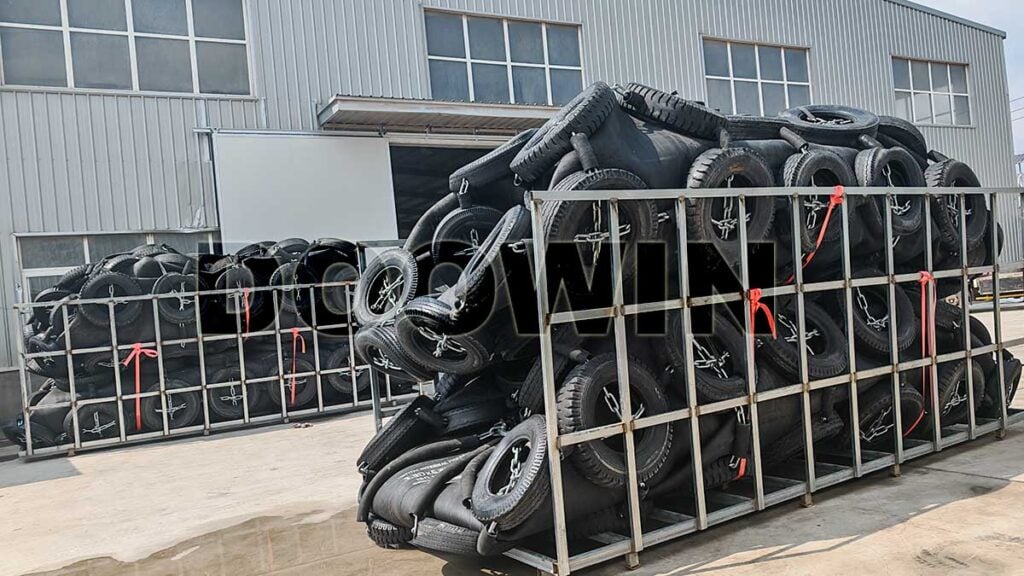Pneumatic rubber fenders are indispensable in maritime operations, providing critical protection for vessels and offshore structures during berthing and mooring. When it comes to shipping these large, bulky items—especially over long distances—transporting them in their fully inflated state is highly impractical and cost-prohibitive. The industry-standard solution is to ship them deflated. This process, while straightforward, requires meticulous attention to detail to ensure the fenders arrive at their destination in perfect condition, ready for service.

A large pneumatic rubber fender is prepared for shipment by carefully releasing the internal air. This significant reduction in volume is the first and most crucial step for efficient transport.
Why Deflate for Shipment?
The benefits of shipping fenders in a deflated state are clear:
1. Massive Space Savings: A deflated fender can reduce its volume by up to 80-90%. This allows multiple units to be stacked and stored in a single shipping container or vessel hold, drastically cutting freight costs.
2. Enhanced Safety & Security: A deflated fender is inert and cannot rupture under internal pressure changes caused by temperature fluctuations during transit. It is also less susceptible to damage from impacts.
3. Easier Handling: The flexible, flattened profile of a deflated fender makes it easier to lift, move, and secure within a container using slings and cranes.
Key Considerations for a Successful Shipment
* Stowage: Ideally, the crated fenders should be stored in a closed, dry cargo hold or container, away from direct sunlight, extreme temperatures, and harmful chemicals.
* On-Site Re-inflation: Upon arrival, the fenders should be inspected for any damage before inflation. Inflation must be carried out slowly and carefully according to the manufacturer’s pressure guidelines, using a suitable air compressor.
Shipping large-size pneumatic rubber fenders in a deflated state is a proven, efficient, and safe method that aligns with best practices in global logistics. By following a careful procedure of deflation, cleaning, cushioning, and robust crating, operators can ensure their valuable marine assets are delivered safely and economically, ready to perform their critical protective role for years to come.